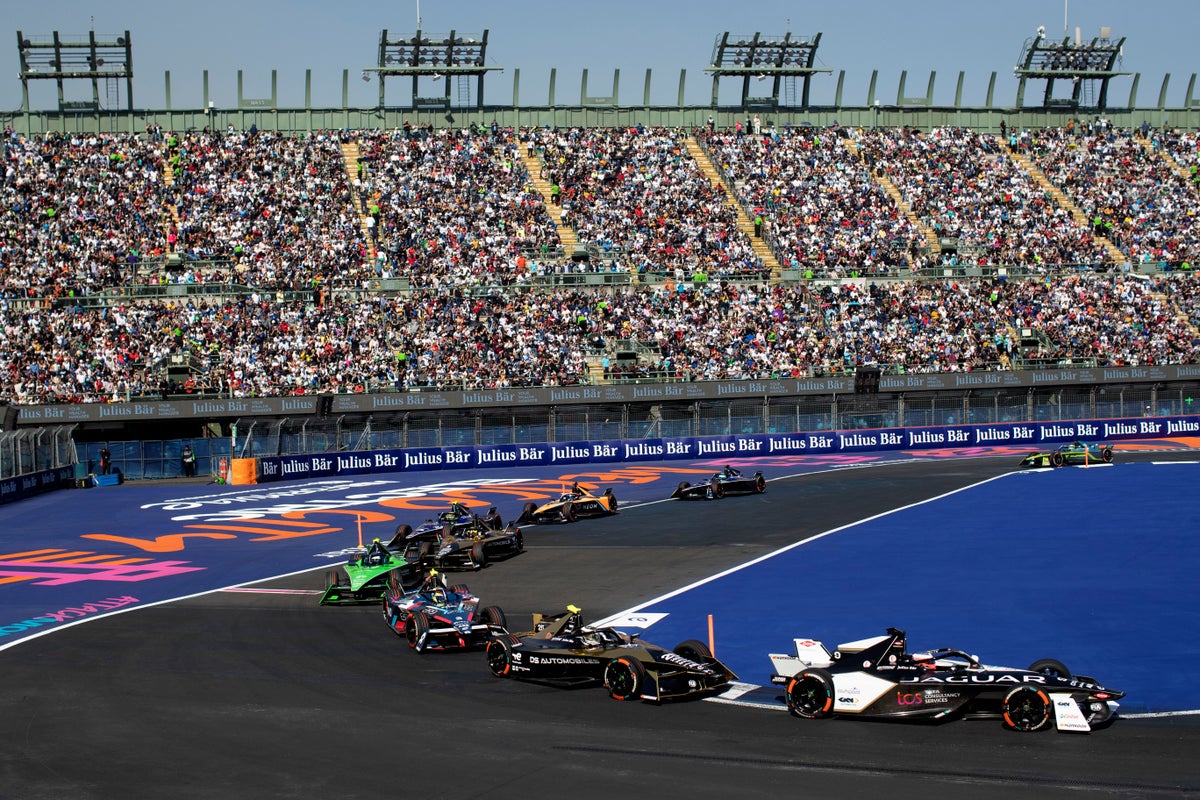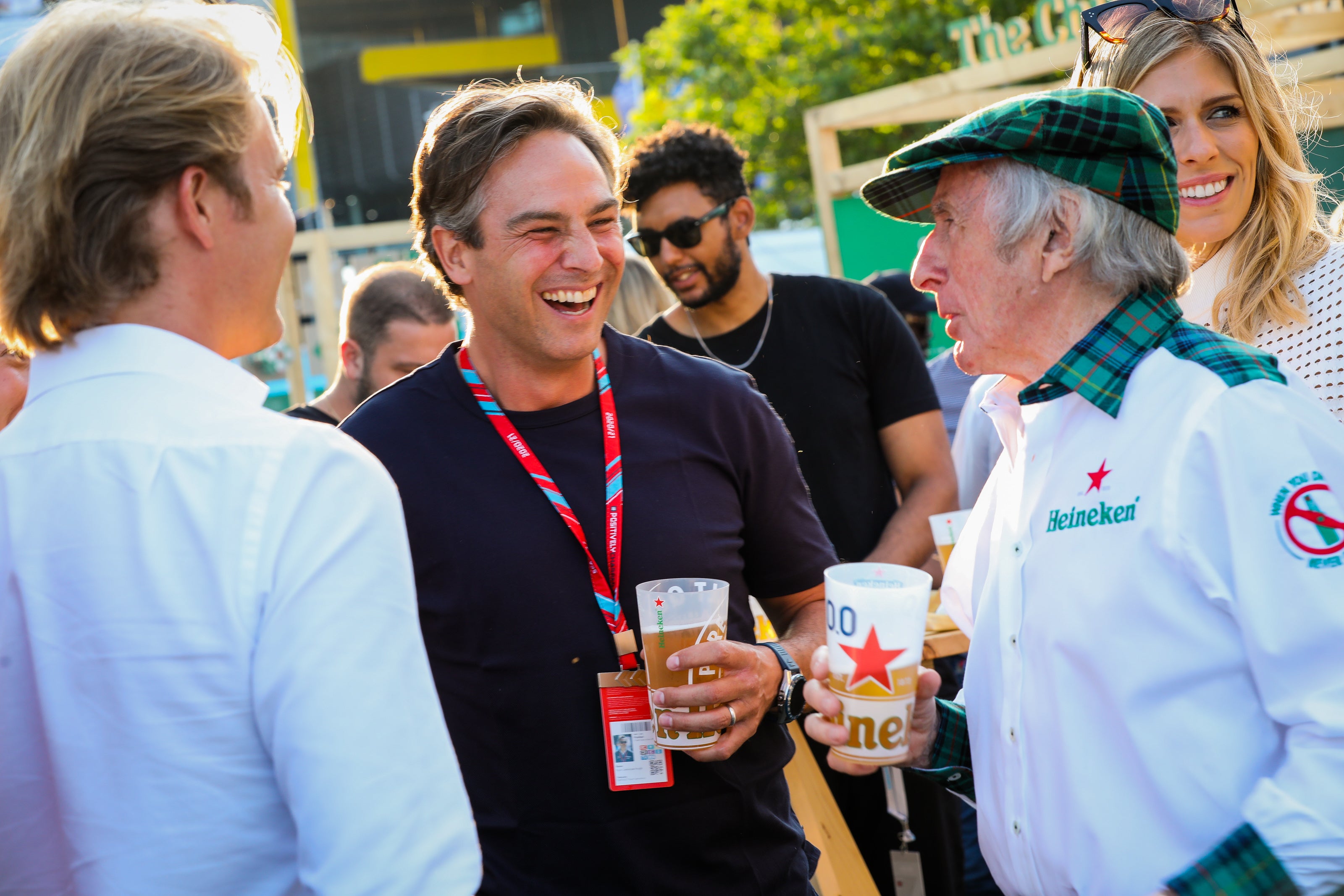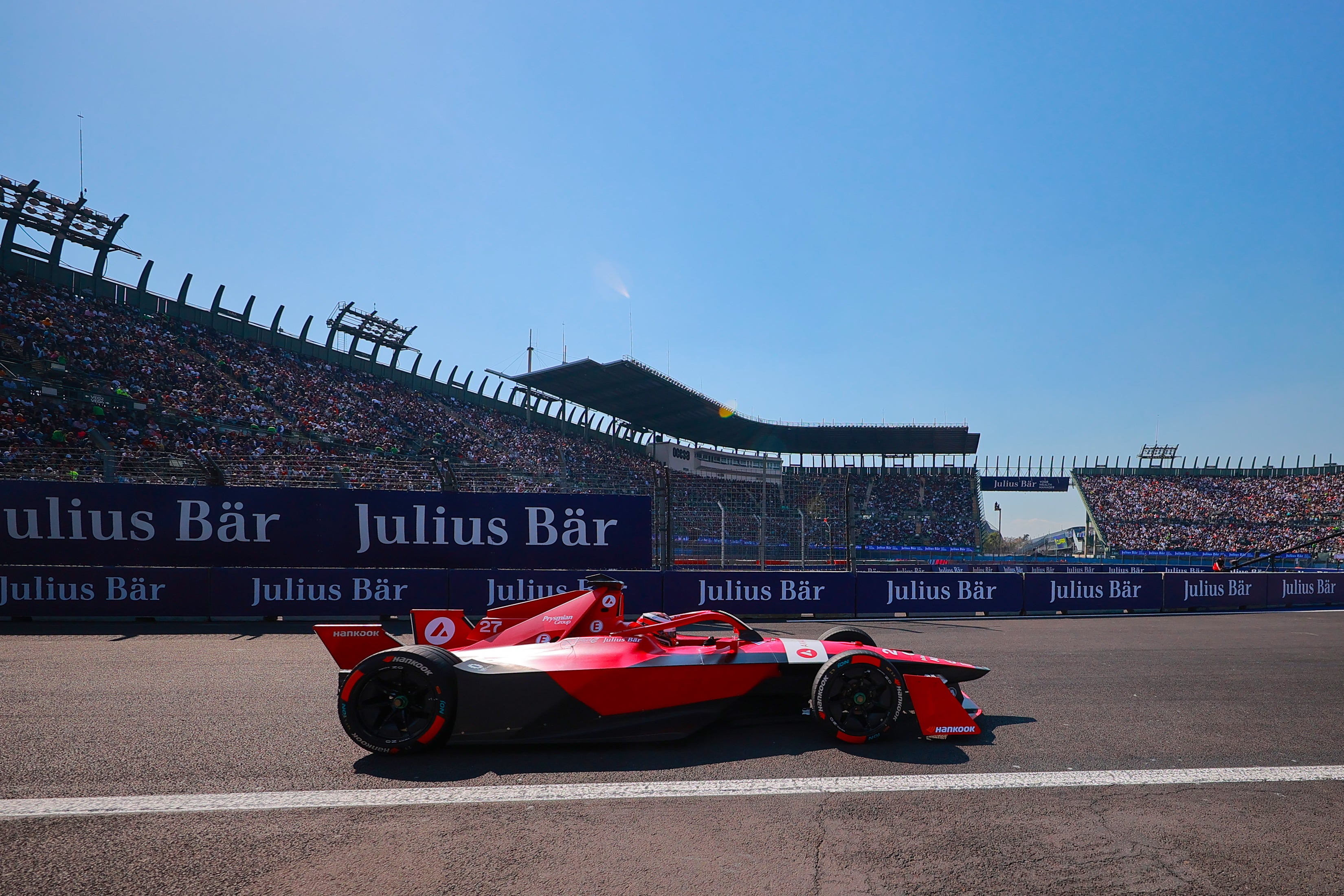
In a manner typical of his loved-or-loathed eccentricity, Italian motorsport giant Flavio Briatore has a habit of cutting through the noise and, rather starkly, hitting the nail on the head. Never short of an assertive opinion, the former Renault F1 boss was recently speaking to Formula E chairman Alejandro Agag about the all-electric series’ new Gen3 car, which made its competitive debut in Mexico City over the weekend.
Previously unflattering in his assessment of Formula E, upon seeing the fresh model, Briatore seemed converted. “Finally, you have a car which looks like a racecar,” he quipped. Spanish businessman Agag, telling the world’s media at the first race of the 2023 season, interrupted a colleague speaking on stage to tell the tale, with a look of justification writ large over his face.
Formula E’s latest venture – in creating their quickest, lightest and most sustainable car to date – is four years in the making and marks the start of a new era for the sport, in its ninth season, as it looks to take a step up in performance amid motorsport’s worldwide boom predominantly caused by Formula 1’s exponential surge in popularity.
In essence, Briatore’s statement points towards the juggling act which Formula E has grappled with since its inception in 2014. Three years earlier, the single-seater electric concept was signed and sealed between Agag and then-FIA president Jean Todt on a napkin at a dinner in Paris. Now, with the 2023 campaign set to host more races and cities than ever before, one question lingers: can the sporting product match the investment and the idea?
Because beyond any marketing spree, what lures new fans into any sport is the appeal of the action itself. The drama. The racing. Compared to F1 – and other staple racing series’ such as IndyCar and the World Endurance Championship – Formula E has struggled to capture the imagination with its sporting spectacle. It is a point not lost on Jamie Reigle, Formula E’s CEO since 2019. Yet, as anyone in the paddock points out, FE has no interest in riding on the coattails of F1. It is its own entity.
“The proof will be in the pudding,” says former Manchester United and Los Angeles Rams executive Reigle, of the Gen3 cars and the effect they’ll have on racing. “It’s a new car development programme and inevitably we’re pushing the limits here in terms of capability.
“There’s a high level of anxiety but we feel very good about where we are. Manufacturers [Audi, BMW and Mercedes amongst them] have left but we’ve addressed the sporting format and the current teams are investing. We’ve now set up the conditions that the best team and driver should win week-in, week-out.”
There are believers in the highest echelons of motorsport. While Toto Wolff opted to withdraw Mercedes – champions in the last two years – from the sport as they streamline all their resources towards F1, McLaren CEO Zak Brown had the opposite opinion, as the Woking-based team acquired Mercedes-EQ to deputise in FE. Famed Italian brand Maserati are also a new entrant for 2023.

“Formula E is a big part of the future of motorsports,” Brown told a group of journalists in Mexico. “We’re trying to create the most exciting racing team in the world with Formula 1, IndyCar, Extreme E and Esports. We want to bring a crossover of fans to different sports, multiply our fans and diversify. It gives a greater depth of opportunities for the team and our partners – and so far it’s working.”
Yet the season opener at the Autodromo Hermanos Rodriguez – the same track which hosts F1’s Mexican Grand Prix – on Saturday neatly captured the schism Formula E faces. Sure, not all races can be top-of-the-range every weekend. But the 40,000-strong crowd in Mexico City will, for all the world-class DJs and paddock access, by large accounts have hoped for more.
Even the iconic Foro Sol stadium section – where the ‘Attack Mode’ was located – saw little in terms of salivating racing action. Television cameras also missed eventual winner Jake Dennis’ crucial overtake on Lucas di Grassi. There are teething issues to iron out.

However, the sport has made moves to improve the spectacle. Replacing the previous ‘timed’ format with laps is a smart move, with the intention of making races easier to follow to the non-hardcore viewer. Ridding itself of the gimmicky fan boost was a no-brainer. The introduction in later races of ‘Attack Charge’, triggering 30-second quick charge pit stops, will add an extra dimension too.
Away from racing, Formula E continues to push boundaries in impressive fashion. Not only are they supporting UNICEF’s climate programmes with the aim of helping three million children worldwide over a three-year partnership, but also the formation of the ‘Girls on Track’ initiative gives young women between 12 and 18 the opportunity to discover the different aspects of motorsport through activities and workshops. In Mexico, for instance, 120 girls were involved in a range of different events – some behind the wheel and some in the classroom.
The series has no problem in attracting star names all over as well. Vernon Kay fronts the worldwide coverage, with Sky F1 pundit Karun Chandhok present in Mexico too. Also signed up to appear in 2023 are Naomi Schiff and Nelson Piquet Jnr. Social media influencers – a vital market for Formula E – such as Chunkz and Josh Denzel were also lapping up the camera lens on the grid on Saturday. A new app was launched last week, alongside a new logo at the back end of last year, with a second season of a ‘Drive to Survive’ style behind-the-scenes docuseries premiering on Discovery too – called ‘Unplugged.’
Every avenue is, it seems, being pursued. Formula E deserves a huge amount of credit for the initiatives launched. Yet, will it be enough?
The whole premise behind Gen3, new branding and new races in locations such as Cape Town, Sao Paulo, Hyderabad and Portland was taking the series to the next level. From Dennis’ triumph in Mexico for Avalanche Andretti to the final round in London at the end of July, the dawning of a brave new world presents fresh opportunity for all 22 drivers and 11 teams in the paddock.
2023 is undoubtedly vital. The Independent spoke to numerous drivers – such as Mitch Evans, Pascal Wehrlein Sam Bird and Jake Hughes – who all insisted this year has the potential to be the biggest yet for the sport. Yet Reigle admits there is plenty more to come beyond that too.
When asked by The Independent what the next challenge is for the sport after the launch of Gen3, the American replied: “The thing with Formula E is that electric technology is moving so quickly. All the ingredients are there, but we’ll tweak it. We’ve got Attack Charge coming. The sporting format is fairly stable.
“We’re already having conversations about what the next generation looks like. The product needs to evolve, whether that be slick tyres on the car, the bodywork, the aerodynamics, the battery development. To me, now we have a cost-cap in place, suddenly you open up a lot of technical opportunities.
“It then all leads back to the main issue: will it make the sport more popular? To me the answer is yes.
“People want to see performance, excitement and be blown away. This platform has the opportunity to do that. Will we be at that point tomorrow? Not quite. But it’s all to play for. We have to be optimistic about it, not anxious.”
The philosophy and ambition is certainly striking. How bold and brutal the racing can be, alongside the scale of the show, remains to be seen. But hope is high and as Briatore referred to, all the ingredients are in place. Now it’s time for action.







